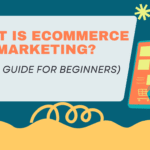
E-commerce Marketing Strategies for Success
What is E-commerce Marketing?
E-commerce marketing refers to the process of promoting products and services through online platforms, facilitating the buying and selling of goods or services over the internet. In today’s digital age, the significance of e-commerce marketing has grown substantially, as it provides businesses with a method to reach a global audience. With an increasing number of consumers turning to online shopping, implementing effective marketing strategies is essential for any organization aiming to thrive in the competitive digital marketplace.
Table Of Content
- The Components of E-commerce Marketing
- Benefits of E-commerce Marketing
- Understanding Your Target Audience
- Creating Effective E-commerce Marketing Strategies
- The Role of Social Media in E-commerce Marketing
- Email Marketing Best Practices
- Utilizing Analytics for E-commerce Marketing
- Future Trends in E-commerce Marketing
The importance of e-commerce marketing lies in its ability to leverage various channels and tools to attract, convert, and retain customers. Businesses can utilize search engine optimization (SEO), social media marketing, email marketing, and paid advertising to enhance visibility and drive traffic to their online stores. These methods not only help in reaching potential customers but also play a critical role in building brand awareness and establishing credibility in the market.
Moreover, businesses often integrate their marketing strategies with their e-commerce platforms to create a seamless experience for their customers. For instance, a company might use targeted advertising based on user behavior, ensuring that the promotions reach individuals who are more likely to be interested in the products offered. Additionally, analytics tools can track customer interactions, providing invaluable insights into buying patterns and preferences, allowing companies to refine their marketing efforts continually.
In essence, e-commerce marketing encompasses a wide range of activities aimed at driving sales and growing a customer base in the online realm. It is a vital component of any e-commerce business strategy, ensuring that products and services are not only visible but also appealing to potential buyers. By understanding and implementing these marketing strategies effectively, businesses can achieve greater success in the ever-evolving landscape of e-commerce.
The Components of E-commerce Marketing
E-commerce marketing encompasses a wide array of components that collectively work to promote products or services online. One of the foundational elements is Search Engine Optimization (SEO), which aims to enhance a website’s visibility on search engines like Google. By optimizing website content and improving site structure, businesses can attract organic traffic, leading to increased sales and customer engagement. Effective SEO strategies include keyword research, on-page optimization, and building quality backlinks, all of which contribute to a stronger online presence.
Another vital component is content marketing, which focuses on creating and distributing valuable, relevant content to attract and engage a target audience. This includes blog posts, videos, and infographics that not only promote products but also educate consumers and build trust. By providing helpful information, businesses can establish themselves as industry authorities, which in turn fosters customer loyalty and drives conversions.
Social media marketing has become indispensable for e-commerce businesses seeking to connect with customers where they spend a significant amount of time. Platforms such as Facebook, Instagram, and Twitter offer opportunities for brands to showcase their products, interact with users, and amplify their reach through targeted advertising. Engaging content shared on social media can lead to increased brand awareness and customer acquisition.
Lastly, paid advertising, such as pay-per-click (PPC) campaigns, can provide immediate visibility and an opportunity to drive targeted traffic to an e-commerce site. With the capability to reach specific demographics and track performance metrics, businesses can optimize their paid campaigns for better results. Integrating these components creates a holistic e-commerce marketing strategy that promotes sustained growth and success in the competitive online marketplace.
Benefits of E-commerce Marketing
E-commerce marketing offers numerous advantages that significantly enhance the overall performance and reach of businesses in the digital landscape. One of the primary benefits is the increased geographical reach that online platforms provide. Unlike traditional brick-and-mortar establishments, e-commerce allows businesses to transcend physical limitations and connect with customers globally. This expanded reach not only increases visibility but also opens doors to diverse markets, thereby driving sales growth.
Another key advantage of e-commerce marketing is the ability to implement highly targeted advertising campaigns. Through data analytics and customer segmentation, businesses can tailor their marketing strategies to specific demographics, interests, and behaviors. This level of personalization ensures that marketing efforts resonate with the intended audience, leading to higher conversion rates and improved return on investment (ROI). By leveraging various online channels such as social media, email, and search engines, businesses can execute effective marketing campaigns that resonate with potential customers.
Cost-effectiveness is also a significant benefit of e-commerce marketing. Unlike conventional marketing methods that often require substantial investment in print media, TV ads, or physical promotional materials, e-commerce marketing typically requires less expenditure. Digital platforms provide businesses with flexible pricing options and the possibility to run cost-efficient campaigns, thus maximizing their marketing budget. Additionally, the lower overhead costs associated with online operations further enhance overall profitability.
Moreover, e-commerce marketing enables businesses to measure and analyze performance metrics more effectively compared to traditional marketing methods. Advanced analytics tools offer insights into customer behavior, engagement levels, and campaign performance. This capability allows for real-time adjustments and optimizations, ensuring a data-driven approach to marketing strategies that can lead to ongoing improvements and sustained success.
Understanding Your Target Audience
In the increasingly competitive landscape of e-commerce marketing, understanding your target audience is paramount for success. Establishing a clear picture of who your customers are enables e-commerce businesses to tailor their offerings, enhance user experience, and ultimately drive sales. A strategic approach begins with the creation of comprehensive buyer personas, which serve as fictional yet realistic representations of your ideal customers. To develop these personas, e-commerce marketers should analyze various factors including age, gender, income level, shopping behavior, and pain points.
Customer demographics play an integral role in shaping marketing strategies. By collecting data from various sources such as online surveys, social media analytics, and sales patterns, businesses can segment their audience into specific groups. This segmentation allows for targeted campaigns that resonate more deeply with individual customers, as different segments have unique preferences and purchasing behaviors. For instance, marketing messages that appeal to millennials might differ significantly from those crafted for baby boomers, due to the distinct values and shopping habits of these cohorts.
Moreover, understanding your target audience extends beyond demographics; it encompasses emotional triggers and motivations that influence purchasing decisions. Conducting market research and gathering qualitative data can shed light on what drives your customers’ choices. By aligning your product offerings and marketing messages with the identified needs and desires of your target segments, e-commerce businesses can establish stronger connections with their audience.
In conclusion, investing time and resources into understanding the target audience is a crucial element of effective e-commerce marketing. By creating detailed buyer personas and leveraging customer demographics, businesses can create more impactful marketing strategies that cater to specific audience segments, ultimately resulting in enhanced customer satisfaction and increased sales performance.
Creating Effective E-commerce Marketing Strategies
Developing comprehensive e-commerce marketing strategies is a critical component for businesses aiming to thrive in the digital marketplace. To begin with, it is essential to set clear objectives that align with your overall business goals. These objectives should be specific, measurable, achievable, relevant, and time-bound (SMART) to facilitate effective tracking of progress and performance. For instance, a common goal might be to increase website traffic by 30% over the next quarter or to boost conversion rates by 15% within six months.
Once objectives are established, selecting the right marketing channels is crucial. An effective e-commerce marketing strategy typically employs a mixture of channels including social media, email marketing, search engine optimization (SEO), and paid advertising. Each channel has its strengths and caters to different audience segments. For example, social media platforms foster engagement and brand awareness, while email marketing can nurture customer relationships and drive repeat sales. Understanding where your target audience spends their time will aid in allocating resources efficiently.
Integrating various marketing tactics is another vital aspect. An effective e-commerce strategy ensures that these diverse channels work cohesively rather than in isolation. For example, combining SEO efforts with content marketing can enhance visibility and lead to higher website traffic. Additionally, integrating customer feedback mechanisms can inform future marketing decisions and product offerings. This holistic approach not only drives sales but also fosters deeper engagement with customers, ensuring they feel valued and connected to the brand.
In essence, a successful e-commerce marketing strategy requires careful planning, channel selection, and the integration of tactics to create a seamless experience for the target audience. Establishing clear goals, leveraging the appropriate marketing channels, and ensuring that all components work together are foundational elements that contribute significantly to e-commerce success.
The Role of Social Media in E-commerce Marketing
Social media has emerged as a vital tool in the landscape of e-commerce marketing, fundamentally altering how businesses connect with consumers. The diverse array of platforms such as Facebook, Instagram, Twitter, and TikTok provides an unparalleled opportunity for brands to enhance their visibility and engage with potential clients directly. By utilizing these platforms, businesses can create targeted marketing campaigns that resonate with specific demographics, thereby increasing brand awareness and customer loyalty.
One of the primary benefits of leveraging social media in e-commerce marketing is the ability to foster customer engagement. Unlike traditional advertising methods that often rely on one-way communication, social media allows for an interactive dialogue between brands and consumers. By encouraging user-generated content and responding to customer inquiries in real-time, businesses can build stronger relationships with their audience. This interactive approach not only enhances customer satisfaction but also cultivates brand advocates who are likely to share their positive experiences within their networks.
Moreover, social media serves as a significant driver of traffic to e-commerce websites. By strategically placing links to product pages in posts, stories, or ads, businesses can channel interested users directly to their online stores. Effective call-to-action phrases, paired with engaging visuals, can significantly boost click-through rates. Additionally, paid advertising on social media platforms allows for further precision in reaching target audiences, resulting in higher conversion rates.
To ensure successful social media campaigns, businesses should focus on consistent branding and messaging, utilize analytics to track performance, and remain adaptable to changing trends within the digital marketing landscape. By fostering a deep understanding of their audience, brands can harness the full potential of social media to strengthen their e-commerce marketing strategies.
Email Marketing Best Practices
Email marketing remains one of the most effective strategies for e-commerce businesses aiming to increase customer engagement and boost conversion rates. Building a robust email list is the first step in this process; leveraging opportunities such as website sign-ups, in-store incentives, and social media promotions can help grow your subscriber base. It is essential to encourage potential customers to voluntarily subscribe by offering incentives such as discounts, exclusive content, or loyalty points. This not only helps expand your audience but also ensures that your emails reach interested recipients who are more likely to engage with your brand.
Once you have established your email list, creating engaging content becomes paramount. The content should be relevant, personalized, and valuable to the recipient. This involves not only crafting compelling subject lines that entice recipients to open the email but also ensuring that the body content delivers actionable insights, promotions, or updates. Visual elements such as images and videos can significantly enhance engagement, creating a more pleasant reading experience. Moreover, maintaining a consistent brand voice across your communications fosters familiarity and trust amongst your audience.
Segmenting your audience is a vital practice that allows you to tailor your messaging effectively. By categorizing subscribers based on their behavior, purchase history, or demographics, you can send targeted campaigns that resonate with their specific interests and needs. This personalized approach can lead to higher open rates and ultimately boost conversions. Additionally, measuring the success of your email campaigns through metrics such as open rates, click-through rates, and conversions provides valuable insights. Utilizing this data can help refine your strategies over time and enhance overall customer retention.
Utilizing Analytics for E-commerce Marketing
In the rapidly evolving world of e-commerce, leveraging analytics has become a critical component of successful marketing strategies. Businesses are now utilizing a variety of analytical tools to measure the performance of their marketing efforts, understand customer behavior, and identify sales trends. By harnessing data-driven insights, e-commerce brands can make informed decisions that optimize marketing campaigns, enhance customer satisfaction, and ultimately drive revenue growth.
One of the fundamental aspects of e-commerce analytics is tracking website performance through tools like Google Analytics. This platform provides metrics such as page views, bounce rates, and average session durations, allowing marketers to discern how effectively visitors are interacting with their sites. By analyzing these metrics, businesses can identify areas needing improvement, enhance user experience, and tailor marketing strategies to target specific customer segments.
Moreover, conversion rate optimization is another key metric that e-commerce marketers should monitor closely. Understanding the percentage of visitors who complete a desired action, such as making a purchase or signing up for a newsletter, enables marketers to assess their strategies’ effectiveness. Various tools, including A/B testing, can provide valuable insights into which marketing messages or website elements resonate most with customers.
Additionally, social media analytics play a pivotal role in e-commerce marketing. By examining engagement rates, click-through rates, and conversion metrics from social platforms, businesses can refine their social media strategies effectively. Monitoring customer behavior via social channels can also reveal trends in consumer preferences and purchasing patterns, providing opportunities for personalized marketing efforts.
In conclusion, the incorporation of analytics into e-commerce marketing strategies is indispensable. Through systematic analysis of relevant metrics, businesses can facilitate data-driven decision-making that enhances customer engagement and drives overall business success.
Future Trends in E-commerce Marketing
The landscape of e-commerce marketing is continuously evolving, driven by technological advancements and changing consumer behaviors. One of the most significant trends is the rise of personalization, which seeks to tailor shopping experiences based on individual preferences and purchasing history. By leveraging data analytics and customer insights, e-commerce businesses can create highly personalized marketing campaigns. This trend not only boosts customer engagement but also enhances conversion rates, as consumers are more likely to respond favorably to personalized content.
Another critical trend is the growing importance of mobile commerce (m-commerce). With a substantial portion of consumers turning to their smartphones for shopping, it is imperative for e-commerce businesses to optimize their mobile platforms. Ensuring a seamless mobile shopping experience, whether through a responsive website or a dedicated app, can significantly impact sales. M-commerce trends illustrate a shift towards mobile-first strategies, where businesses must consider factors like mobile-friendly designs, easy navigation, and fast loading times to capture the attention of their audience.
Additionally, the integration of artificial intelligence (AI) and automation into e-commerce marketing strategies is transforming the way businesses operate. AI technologies enable companies to automate repetitive tasks, enhance customer service through chatbots, and provide advanced data analysis to inform decision-making processes. Moreover, AI can be utilized in predicting consumer behavior, enabling businesses to tailor their offerings and marketing campaigns accordingly. This trend not only increases efficiency but also presents opportunities for hyper-targeted advertising, ensuring that marketing messages reach the right audience at the right time.
As e-commerce continues to thrive, understanding these trends will be essential for businesses aiming to stay competitive. Adopting personalization, optimizing for mobile experiences, and leveraging AI can position e-commerce brands for future success while meeting the evolving expectations of consumers.






Please! Read this Blog
https://www.digitalmarkety.com/what-are-the-3-types-of-e-commerce/